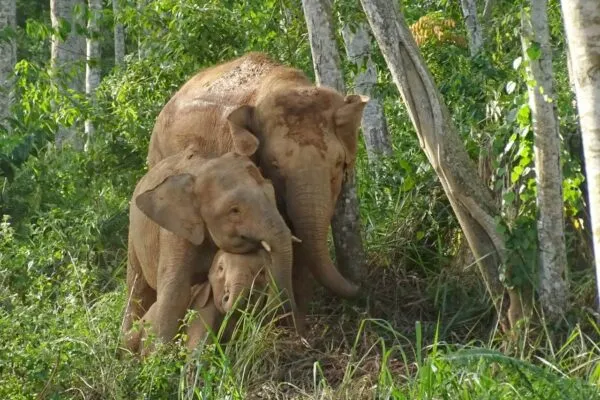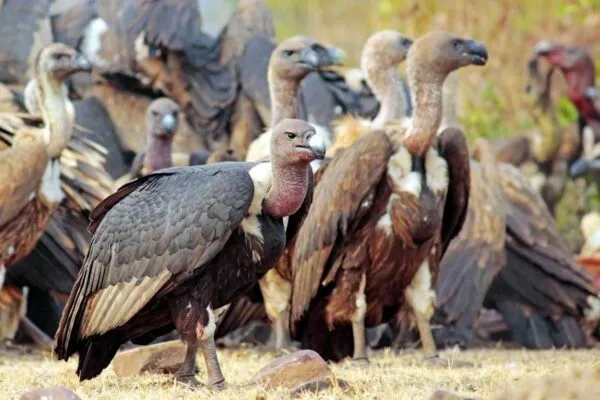Increase in Nepal’s Rhino Population amid Lockdown thrills Conservationists
The number of one-horned rhinos has crossed an exciting number in Nepal’s wildlife sanctuaries by more than a hundred, reaching a thrilling milestone for the Himalayan nation’s conservation efforts. Nepal’s national rhino census is conducted every five years and provides information crucial for future conservation. According to the latest census, the rhino population has witnessed an increase to 752 in the four national parks in the southern plains of Nepal, a jump from 645 in 2015.
The department’s information officer, Haribhadra Acharya said that the department is excited to see rhino survey findings, a rewarding result after the tiger populations have gone up as well. Unfortunately, the bad news is, 161 rhinos died during this period – six of them were killed by poachers, which means that more work needs to be done. Most of the deaths were due to natural causes but it is hard to determine if the habitat or climate change was the reason behind it.
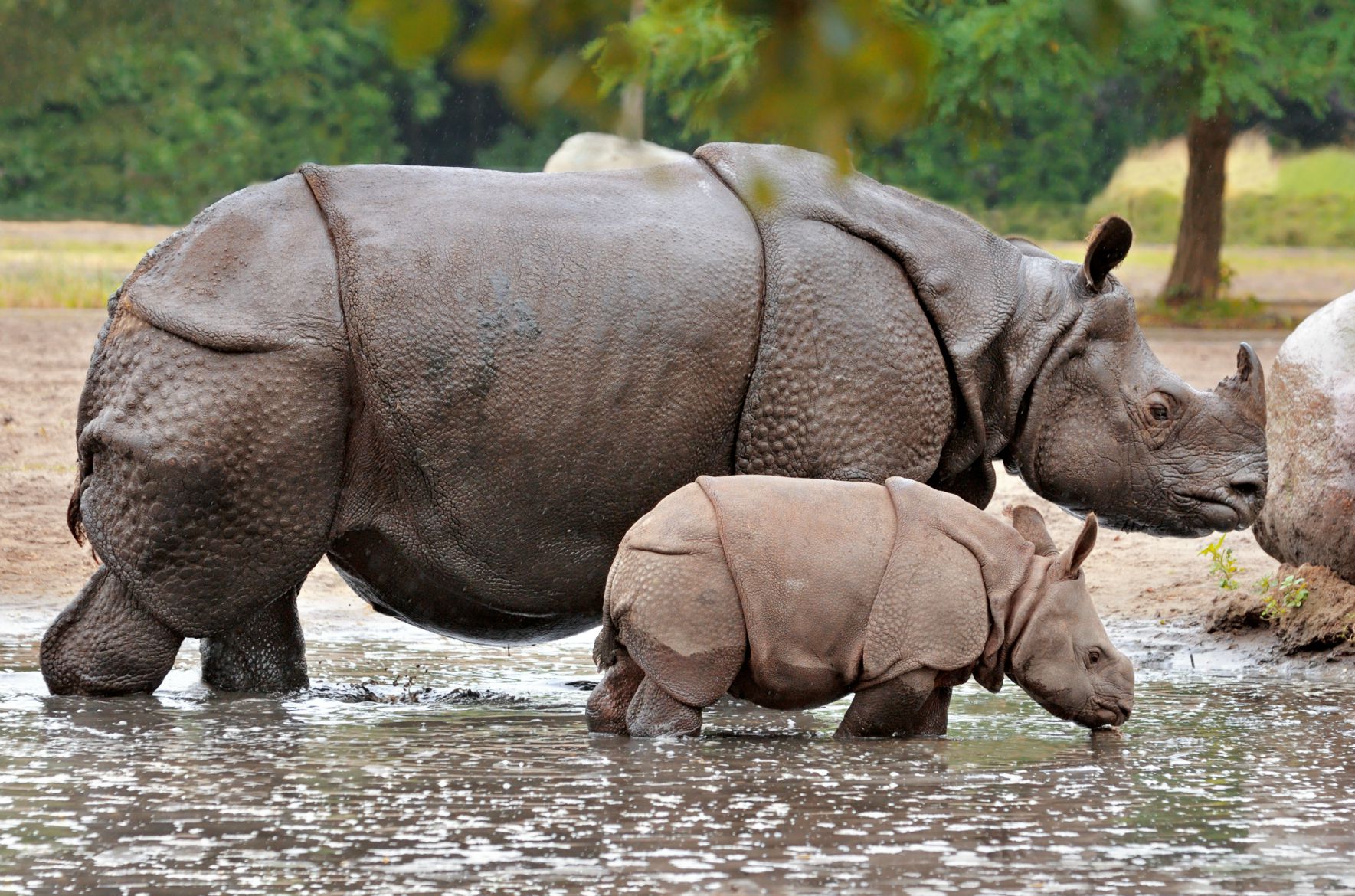
Exciting increased in the population of greater one-horned rhino | Image: WWF
90% of the rhinos live in Chitwan National Park which is also home to tigers, leopards, Gangetic gharials and elephants. These species are at high risk of extinction in wild. They once roamed across Asia from Pakistan to Myanmar, including Nepal, Bangladesh and Bhutan.
Due to hunting and human encroachment in their habitat, the number of wild species has started to significantly decline. By the end of the 20th century, only 200 rhinos were remaining. Fortunately, with strict regulations under Indian and Nepalese wildlife authorities, the numbers are recovered to 3,600 currently.
With the population increase in recent decades, the status of one-horned rhinos has improved from endangered species to vulnerable. The officials stated that the global pandemic helped the animals and their habitat to flourish in so many ways, as the lockdown gave rhinos a chance to roam freely without tourists around.
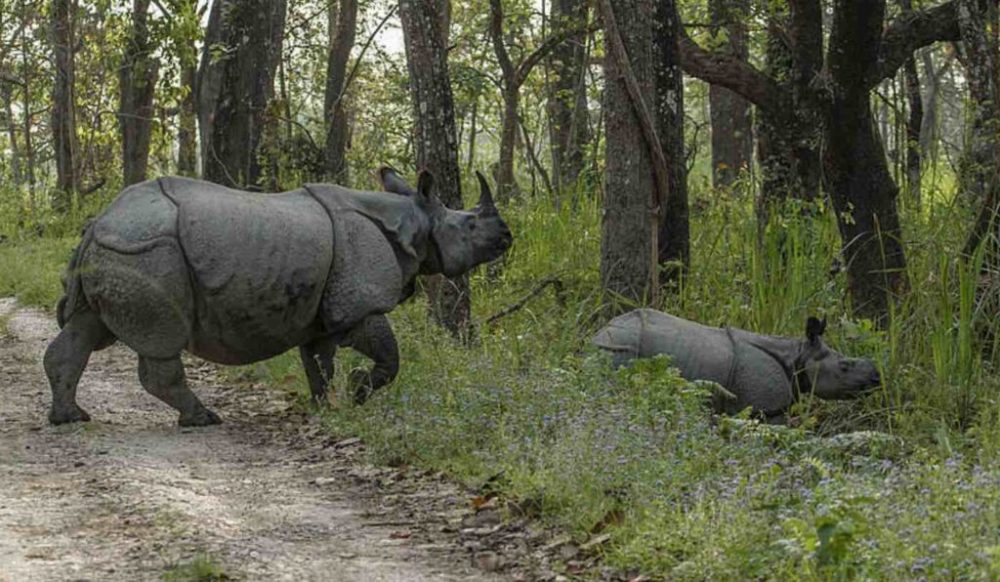
The forest authorities counted endangered rhinos in Nepal | Image: Good News Network
On the other hand, poachers have exploited the situation by killing four rhinos last year. Around 350 experts and the forest department inspected deep in the forest for about three weeks to calculate the rhinos headcount. The census certainly wasn’t a smooth ride. The rhino counters rode domesticated elephants covering 950 sq km area in Chitwan National Park with limited roads. Several team members were injured in Chitwan after a rogue wild elephant attacked animals, causing them to panic.
In Bardiya Sanctuary, a tiger killed an elephant trainer who was gathering fodder for the animal at the end day. Despite the difficulties, the count was concluded. Even though there is a rise in the rhino population, the picture is still very fragile.
The growth percentage has decreased in the last 6 years comparing to the previous census period. Some rhinos have even flooded from Nepal to India. The country is working to limit the impact of war and human migration on conservation projects.
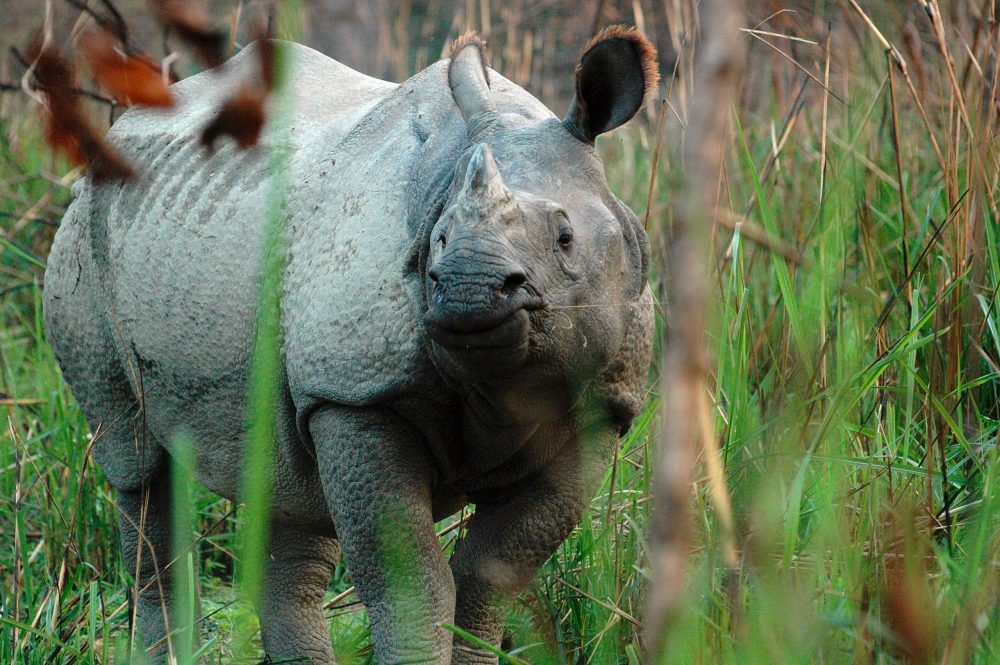
With an increase in the Rhino population in Nepal in recent decades, the status has improved from endangered to vulnerable | Image: WWF
Once home to thousands of rhinos, the mass settlement and political unrest of people around the Chitwan National Park in the 1950s and 60s caused the count of rhinos to dwindle. Furthermore, poaching, deforestation and encroachment of habitat also contributed to the decline of the species. The 10-year civil war between Nepal’s security forces and local Maoist rebels had a devasting impact on wildlife in 2006. Poachers took advantage of the unrest and killed animals for their horns.
The World Wide Fund for Nature (WWF) said that the rhinos are traditionally hunted to make East Asian medicines – even though there is no scientific proof for medical properties. Nepali soldiers were deployed by the government inside the park and local communities to disrupt the poaching network. Tourism picked up as rhinos’ count increased. Nearly 40% of the revenue from the park was invested in nearby villages.
The increase in rhino and tiger population is a phenomenal achievement for an underdeveloped country like Nepal, however pro-active management is required to maintain the growth of conservation as it is going to be a huge challenge for the local authorities.
Via: The Live Mint
